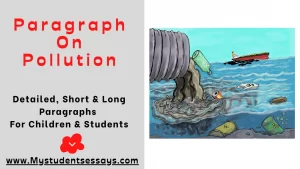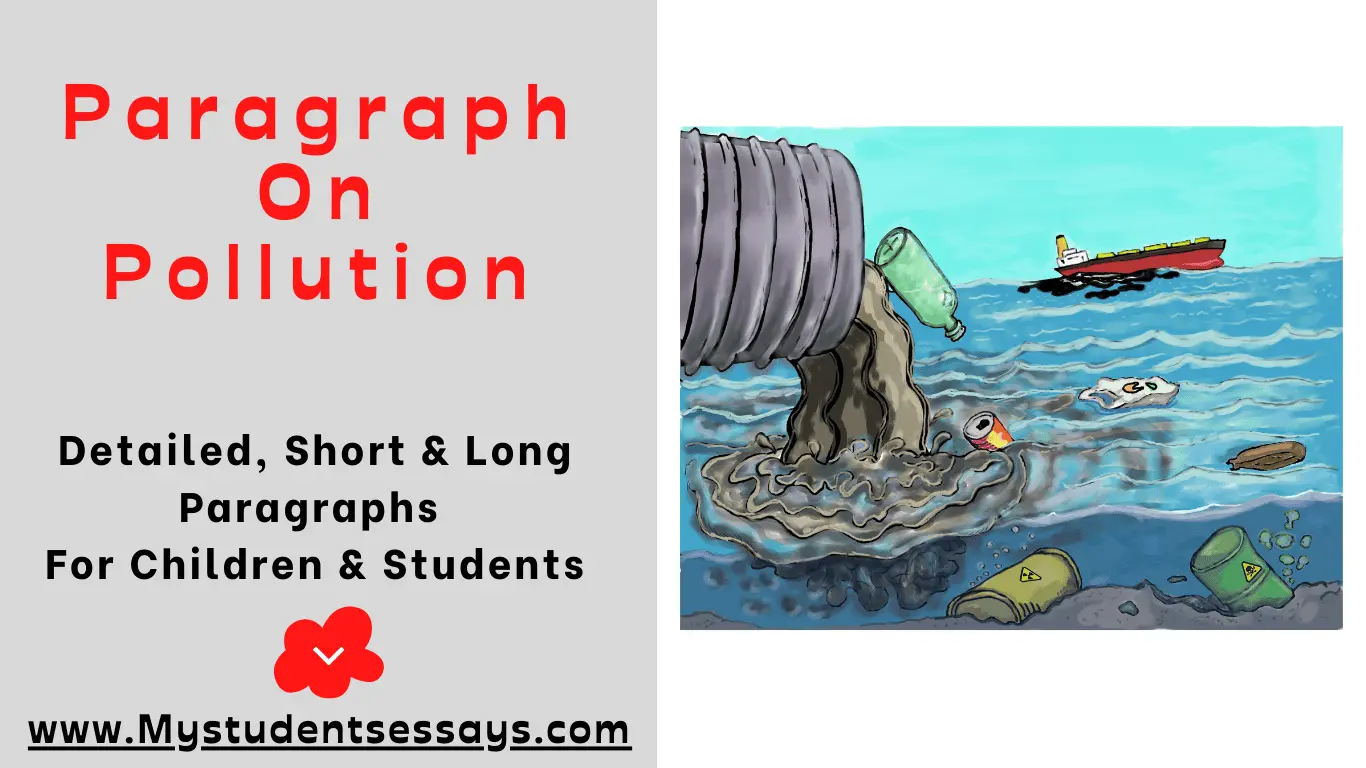Pollution is the grave threat to the existence of human being. Pollution, if not stopped, would end the world and results in the destruction of our environment. The following Paragraph on Pollution discusses the types, impacts and ways to counter pollution for the greater benefit of our environment.
Paragraph on Pollution- Types of Pollution, Impacts and Ways how to Counter Pollution
Pollution is one of the dangerous threats to the world. It has become a major problem in many parts of the world. The sources of pollution are many, including automobiles, factories, and power plants. Pollution can cause serious health problems, including respiratory diseases and cancer.

Pollution, if defined, is the presence of dangerous contaminants in the environment that can cause harm to living organisms. There are different types of pollution, and they all have different sources. The most common type of pollution is air pollution, which comes from automobiles, factories, and power plants. Air pollution can cause serious health problems, including respiratory diseases and cancer.
>>> Read Also: “Paragraph On Causes & Impacts of Air Pollution”
Types of Pollution:
There are six major types of pollution: air, water, land, noise, thermal, and light.
Air Pollution: Air pollution is the contamination of the air by harmful gases and particles. The primary sources of air pollution are automobiles, factories, and power plants.
Water Pollution: Water pollution is the presence of harmful contaminants in water bodies. The primary sources of water pollution are factories, agricultural runoff, and septic systems.
Land Pollution: Land pollution is the contamination of land by harmful chemicals and wastes. The primary sources of land pollution are factories and agricultural runoff.
Noise Pollution: Noise pollution is the presence of harmful noise levels. The primary sources of noise pollution are automobiles, factories, and power plants.
Thermal Pollution: Thermal pollution is the presence of harmful temperatures. The primary sources of thermal pollution are power plants and factories.
Light Pollution: Light pollution is the contamination of the night sky by artificial light. The primary source of light pollution is outdoor lighting.
Causes of Pollution
The major causes of pollution are:
1. Automobiles: Automobiles release harmful gases and particles into the air. The most common pollutants from automobiles are carbon dioxide, nitrogen oxides, and particulate matter.
2. Factories: Factories release harmful gases and particles into the air. The most common pollutants from factories are carbon dioxide, nitrogen oxides, and particulate matter.
3. Power plants: Power plants release harmful gases and particles into the air. The most common pollutants from power plants are carbon dioxide, Sulphur dioxide, and nitrogen oxides.
4. Agricultural activities: Agricultural runoff is water that runs off of farmland and into water bodies. The water can be contaminated with pesticides, fertilizers, and animal waste.
Effects of Pollution
The major effects of pollution are:
1. Health problems: Pollution can cause a variety of health problems, including respiratory diseases, cancer, and heart disease.
2. Environmental damage: Pollution can damage the environment, including water bodies, forests, and land.
3. Climate change: Pollution can contribute to climate change by causing the emission of greenhouse gases.
How to Reduce Pollution
There are many things we can do to reduce pollution, including:
1. Driving less: When we drive less, we reduce the amount of pollution released into the air.
2. Taking public transportation: When we take public transportation, we reduce the amount of pollution released into the air.
3. Recycling: When we recycle, we reduce the amount of pollution released into the environment.
4. Planting Trees: Trees can help reduce air pollution by absorbing harmful gases and particles.
5. Conserving energy: Conserving energy helps reduce the amount of pollution released into the environment.
6. Using green energy: Green energy is energy generated from renewable resources, such as wind and solar power. Green energy does not produce harmful emissions, like fossil fuels
Students can play a major role in preventing pollution. Firstly, they can advocate for change by speaking out against pollution and its effects. Secondly, they can take action in their own community by organizing cleanups and recycling programs. Finally, they can educate others about the importance of reducing pollution.
>>> Read Also: “Paragraph On Solar System & Its Benefits”
Conclusion
Pollution is a major problem that needs to be addressed. There are many things we can do to reduce pollution, but it will require a concerted effort from individuals, businesses, and governments. Students have a critical role to play in the fight against pollution. By raising awareness and taking action, they can make a difference.
